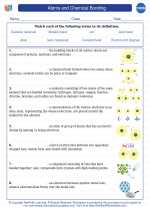Genus Homo
The genus Homo is a taxonomic category that includes modern humans and their close relatives. It is part of the family Hominidae, which also includes the great apes (chimpanzees, bonobos, gorillas, and orangutans).
Key Features of Genus Homo
- Bipedalism: One of the defining characteristics of the genus Homo is the ability to walk upright on two legs, known as bipedalism.
- Increased Brain Size: Over time, species within the genus Homo have shown an increase in brain size compared to earlier hominin species.
- Tool Use and Culture: Members of the genus Homo are known for their sophisticated tool use and the development of cultural practices.
- Language and Communication: The evolution of language and complex forms of communication is a significant feature of the genus Homo.
- Long Childhood and Extended Lifespan: Compared to other primates, species within the genus Homo have extended periods of childhood and longer lifespans.
Species within Genus Homo
Several species have been classified within the genus Homo. Some of the notable species include:
- Homo habilis: Considered one of the earliest members of the genus Homo, Homo habilis lived approximately 2.1 to 1.5 million years ago and is associated with the Oldowan tool tradition.
- Homo erectus: This species had a wide geographical distribution and is known for its use of more complex tools such as hand axes. Homo erectus lived from about 1.9 million to 143,000 years ago.
- Homo neanderthalensis: Commonly known as Neanderthals, this species lived in Europe and western Asia until about 40,000 years ago. They had a robust build and are known for their use of tools and symbolic behavior.
- Homo sapiens: Modern humans, Homo sapiens, are the only surviving species within the genus Homo. They originated in Africa and have since spread to inhabit diverse environments across the globe.
Study Tips
When studying the genus Homo, it can be helpful to focus on the key features that distinguish this group of hominins from other primates. Pay attention to the evolutionary trends in brain size, tool use, language development, and social behavior. Familiarize yourself with the characteristics of each species within the genus Homo and their respective time periods and geographical distributions.
Additionally, consider the impact of environmental and ecological factors on the evolution of the genus Homo, as well as the interactions between different Homo species and their potential contributions to the genetic makeup of modern humans.
Finally, explore the latest research and discoveries in the field of paleoanthropology to gain a comprehensive understanding of the genus Homo and its significance in the story of human evolution.
[Genus Homo] Related Worksheets and Study Guides:
.◂Chemistry Worksheets and Study Guides High School. Atoms and Chemical Bonding

 Worksheet/Answer key
Worksheet/Answer key
 Worksheet/Answer key
Worksheet/Answer key
 Vocabulary/Answer key
Vocabulary/Answer key
 Vocabulary/Answer key
Vocabulary/Answer key
